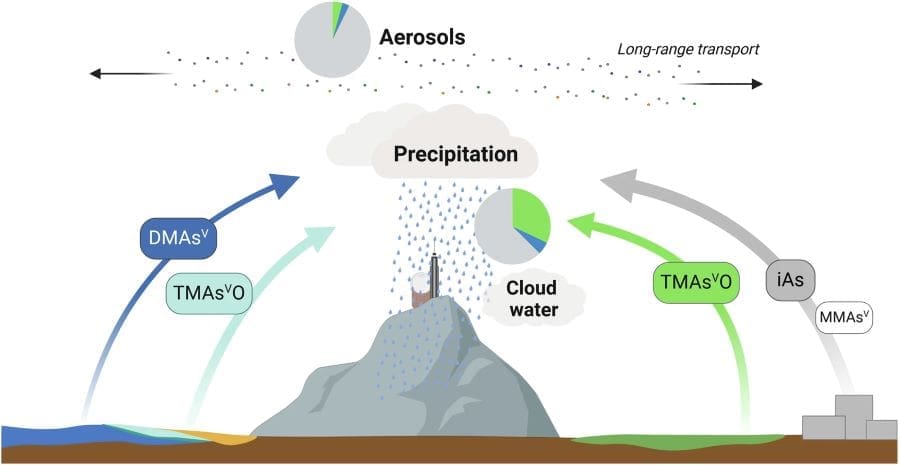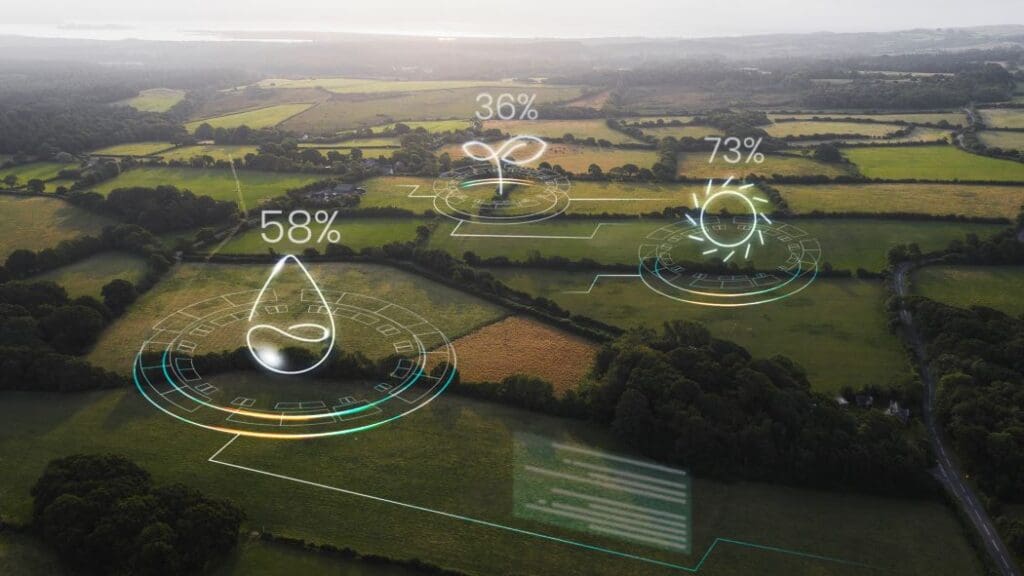Researchers at ETH Zurich have uncovered new insights into how arsenic, a toxic trace element, travels through the atmosphere and interacts with biological systems. By studying particulate matter, clouds, and rainwater from the Pic du Midi research station in the Pyrenees, they revealed transport patterns of arsenic and the significant role of biological processes in its atmospheric cycle.
Table of Contents

Detecting arsenic at trace levels
Arsenic is a naturally occurring trace element with toxic properties, often mistaken by cells for phosphorus due to their chemical similarities. This “risk of confusion,” as explained by Lenny Winkel, Professor at the Institute of Biogeochemistry and Pollutant Dynamics at ETH Zurich, underpins its toxicity. Although it is estimated that approximately 31 tonnes of arsenic orbit the Earth’s atmosphere, detecting it at trace levels in environmental samples has historically been challenging.
To address this, Winkel’s team developed advanced measurement techniques capable of detecting arsenic concentrations as low as 1 to 2 nanograms per liter — up to 20 times more sensitive than previous methods.
Their findings, published in Nature Communications, suggest that arsenic in clouds is significantly more concentrated than in rainwater, though both remain highly diluted.
Tracing atmospheric pathways
Using a combination of chemical analysis and air mass movement models, the researchers identified distinct transport patterns for arsenic. For instance, samples with high sodium levels indicated that arsenic had likely mixed with sea salt (sodium chloride) during its journey. In contrast, samples containing dissolved organic carbon hinted at land-based sources, such as natural emissions from plants or pollution from human activities like transportation and industry.
“It can come from natural sources such as plants and pollen. But it can also be due to human-induced environmental pollution from transport or industry,” says Esther Breuninger, the first author of the scientific paper.
These findings shed light on arsenic’s diverse sources and the ways it travels across continents and oceans before settling in rain or cloud water.
The underestimated role of biological processes
One of the study’s most striking discoveries was the presence of methylated arsenic compounds in rainwater samples. Unlike inorganic arsenic, these compounds are produced when organisms such as bacteria, algae, plants, or fungi metabolize inorganic arsenic and excrete it in a modified form. This indicates that both marine and terrestrial ecosystems contribute to arsenic’s transformation and global distribution.
“Until now, it was assumed that human activities such as the burning of coal or the smelting of ores were mainly responsible for atmospheric arsenic,” said Winkel. However, some cloud samples showed that methylated arsenic compounds made up the majority of the arsenic detected, underscoring the importance of biological processes in mobilizing arsenic. “These results show that biological processes play a more important role than previously assumed,” says Winkel.
The research highlights the need to revise current models of the global arsenic cycle to better account for the role of living organisms. As Winkel concluded: “Apparently, living organisms contribute to the mobilisation of historical arsenic pollution and its global distribution through their metabolism.”
Journal Reference:
Breuninger, E.S., Tolu, J., Aemisegger, F. et al. ‘Marine and terrestrial contributions to atmospheric deposition fluxes of methylated arsenic species’, Nature Communications 15, 9623 (2024). DOI: 10.1038/s41467-024-53974-z
Article Source:
Press Release/Material by ETH Zurich
Featured image: At the Pic du Midi mountain observatory it is raining from all directions – ideal for exploring the pathways of arsenic in the atmosphere. Left: Device for collecting aerosol samples at low temperatures. Credit: Esther Breuninger | ETH Zurich




